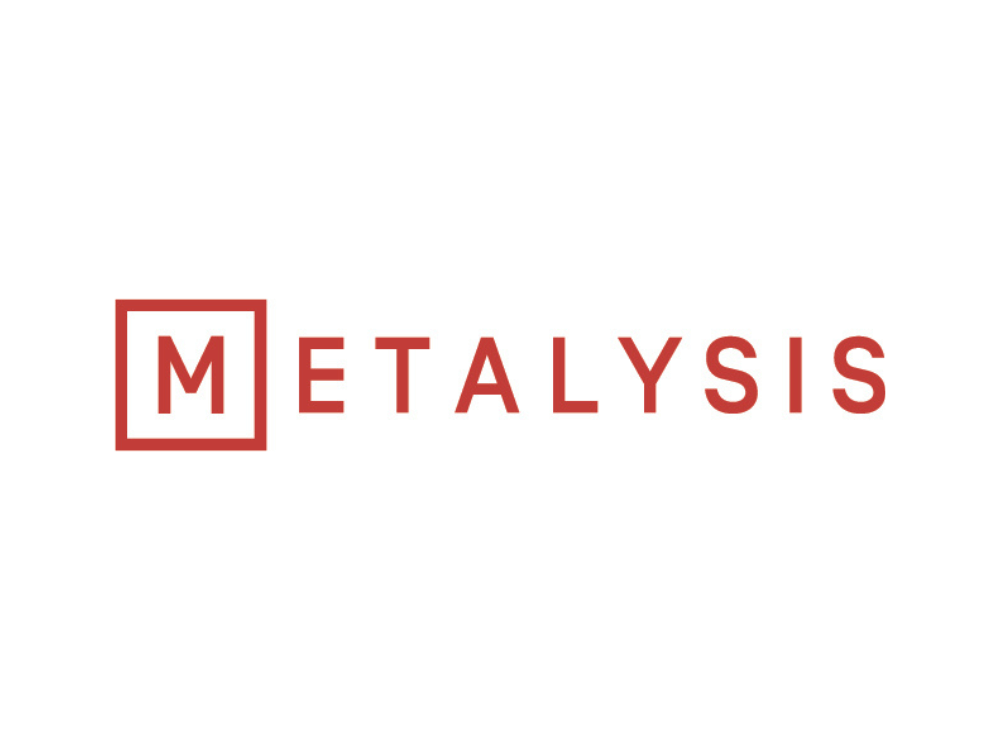- New Gen 1 units enable novel advanced materials research – providing proof of principle grammes of output per machine run.
- Gen 1 offers the first step in the novel advanced materials development journey – from grammes of output per machine per run, to tens of tonnes per annum via the Gen 4 unit.
- Each Gen iteration from 1-4 represents an increase in the scale of the Metalysis patented FFC Cambridge electrolysis process.
Metalysis, the end-to-end manufacturer of solid-state metal and alloy powders and global leader in materials science, today announced the installation of 3 new Gen 1 research units – building on the capacity of the existing 9 – so expanding Metalysis’ first stage research capabilities by a third – in response to unprecedented demand from advanced industries such as hypersonics, defence, clean energy (nuclear fission and fusion) and space.
Using the patented FFC Cambridge electrolysis process, Metalysis reduces metal oxides in the solid state. This method contrasts with traditional melting processes for alloy production, with the FFC Cambridge process scaled across Metalysis’ Gen 1 to Gen 4 units. Gens 1 and Gens 2 are the R&D units based at the Metalysis Discovery Centre at the Advanced Manufacturing Park in Catcliffe, and Gens 3 and 4 are the commercial and industrial units based at the Metalysis Manufacturing Centre in Wath upon Dearne – visited in November 2024 by local MP and Secretary of State for Defence Rt. Hon John Healey MP.
Each Gen 1 can produce grammes of output per machine per run and is the first stage in the Metalysis product development process. The Gen 1s directly serve commercial clients’ advanced material development needs via producing low levels of output for proof of principle before the client’s requirements are elevated to Gen 2, then Gen 3, and potentially to Gen 4, which is capable of tens of tonnes of output per unit per year. The availability of different Gen’s for trial batches offers flexibility to customers, negating the requirement to place large minimum order quantities.
Each Gen unit contains a crucible of electrolyte (calcium chloride, more commonly known as rock salt) and traditionally a carbon anode, with variations in the anode possible dependent upon the off-gas being produced. The metal oxide acts as the cathode, and with heating of the rock salt between 650-950 degrees Celsius and a voltage applied, the oxygen is released, gravitating to the anode, leaving a metal sponge. This is then crushed, milled, and dried, giving a metal or metal alloy powder. The process is agnostic to oxide composition, meaning the Gen units are not constrained by product type.
The benefits of the Metalysis electrolysis process are that in contrast to traditional melting processes for metal alloy powder production, electrolysis uses much lower temperatures and less energy and is a single-stage process rather than multi-stage, such as titanium alloy production. Also, no hazardous chemicals are used during the Metalysis process. This gives substantial energy and yield savings and means that sustainability is built-in across the Metalysis production process.
The Metalysis process in contrast to melting is also highly adaptable, so bespoke materials can be produced as directed by specific customer demand – the ability to create unique attributes in advanced materials has seen Metalysis emerge as a global partner to the advanced electronics – capacitors and semiconductors – clean energy, aerospace, hypersonics, space and other advanced manufacturing sectors which require specific novel and innovative materials. Materials can be developed with specific physical properties and chemical compositions, which traditional manufacturers struggle with due to inherent limitations in their production processes.
The expansion of the Gen 1s is directly due to increasing demand from new sectors: the high entropy alloy sector and the growing commercial space sector.
High-entropy alloys (HEAs) are a new class of alloy that ushers in a revolution in metallurgy not seen since the Bronze Age. Traditionally, alloys are metals alloyed to one base metal. HEAs are an equal configuration of elements, which means new alloys can be constructed with the attributes of each metal spread throughout the new alloy – e.g, strength, ductility, fatigue, and corrosion, oxidation, and temperature resistance.
Since 2019, Metalysis has emerged as the global leader in space exploration, having partnered with the European Space Agency and the UK’s space agency to extract oxygen from lunar regolith. Metalysis was approached because the electrolysis process liberates oxygen from metal oxides. Employing an oxygen-evolving anode versus the conventional carbon, means that oxygen is the released gas – which can be captured, and when utilised in-situ on the lunar surface, can provide oxygen for propulsion and life support. The European Space Agency is developing the Metalysis FFC Cambridge process at Gen 1 scale – whilst Metalysis is in conversations with commercial partners to accelerate the deployment of a Gen 2 on the lunar surface.
Nitesh Shah, CEO of Metalysis, remarked, “We are delighted to be expanding Metalysis’ development capabilities by increasing the number of our Gen 1 units by a third. This need for substantial expansion is led by our partners and potential partners – particularly in the hypersonics and space sectors – who have sourced Metalysis as their global partner for the development and commercial supply of advanced novel materials. As these innovative sectors grow, the need for novel advanced materials increases, and our Gen 1 units will allow us to work with partners on the required physical properties and chemical compositions of their advanced materials. Metalysis recently purchased a spheroidiser for in-house production of spherical powders and this expansion of our Gen 1s further expands our in-house capacity.”
– Ends –

